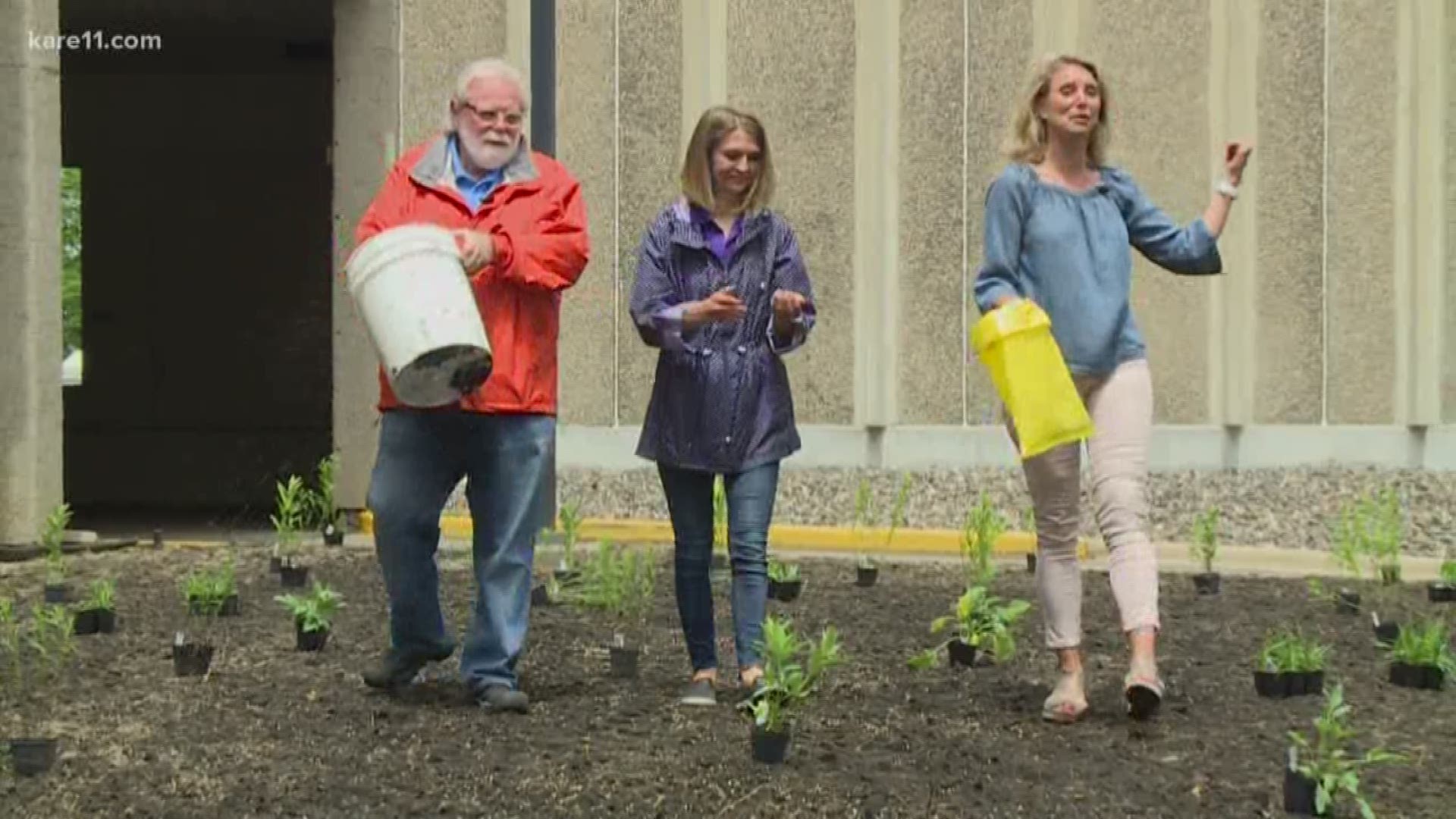GOLDEN VALLEY, Minn. — On June 24, 2019, we finally planted our KARE 11 pollinator prairie, which we started preparations for last fall with Minnesota Native Landscapes. In the fall we removed the existing turf grass, and on Monday morning we tilled the plot, got the seed in the ground and covered it with hydro-mulch to prevent erosion.
Our custom seed mix consisted of 32 native wildflowers, 6 grass species, 1 sedge species and oats for cover crop. Oats help with erosion control, give color right away and help prevent weed growth. The deep-rooted prairie plants will also prevent erosion, and help with storm water retention. Our variety of pollinator species will provide nutrition in pollen, nectar, seeds for birds and insects. We're hoping to see some new friends out in the front yard!
Bre Bauerly, MN Native Landscape Outreach Coordinator, says that this conversion is something that we'll be seeing a lot more. "A lot of turf is coming out and more native plants going in. We're seeing a lot of schools, churches, and libraries switching over from the extensive use and maintenance of turf grass to these relatively low maintenance native prairies."
The low maintenance of these prairies is a huge money saver for companies. The first growing seasons take a little more maintenance to prevent weeds from filling in while the prairie is being established. But beyond that it's just hand pulling of weeds here and there, no need for mowing, fertilizing or watering!
"Watering native plants will actually promote weed growth, it won't necessarily make them germinate faster. So we're saying don't water it as much and don't fertilize it as much, just leave it alone more than you're used to." Bre advised.
These projects can easily be done on small scale too! You can incorporate native plants into a mulch or rock perennial bed or along a fence line. These are plants that are adapted to Minnesota conditions so no need to worry about if they're winter hardy or if they'll come up next year.
RELATED: Grow with KARE: Plymouth prairie
Bre recommends seeding native plants by the end of June. "In areas that aren't going to receive a lot of water throughout the growing season, it really helps with their germination. We don't like to plant them in the hottest, driest part of the season. Native species planting will begin again in September."
We're expecting to wait about three years for this prairie be fully established. While we won't see much color this year, winter will help promote germination in the native seeds that are laying dormant. By the third growing season we'll start to see a lot more blooms and pollinators. In our opinion, it will be well worth the wait.

